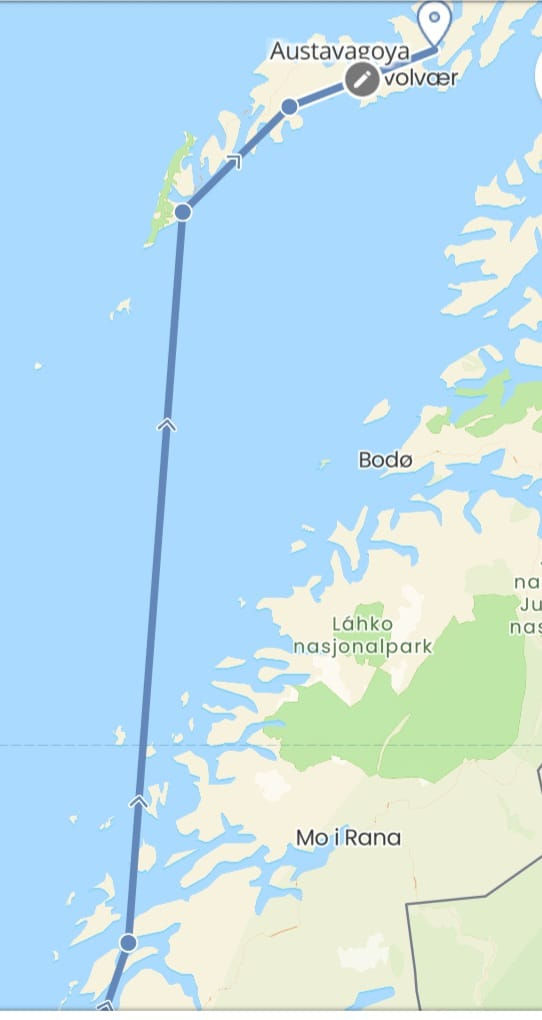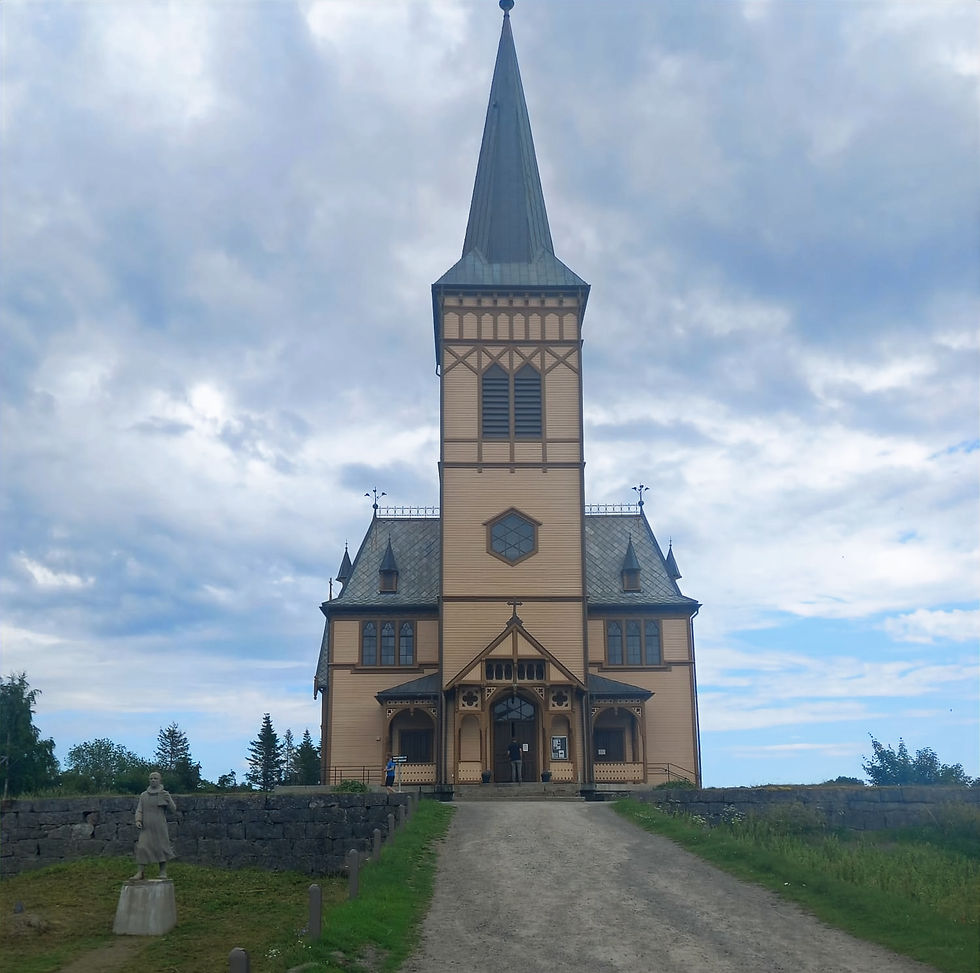Days 22 & 23: Moskenes to Austvagoya Island (153 kms)
- Tim Bugler
- Jul 24, 2025
- 3 min read
Updated: Jul 25, 2025

Day 22 began and ended with my toolkit out, but went swimmingly in between.
My first problem with the bike was quickly fixed -- both legs of the rear pannier rack came loose simultaneously for some reason, just as I was leaving the campsite by the ferry in Moskenes. So, unload again (annoying), tighten, re-load, and away. At the top of the first hill we hit our first tunnel, but less than a kilometre long and well lit. Two further tunnels had bypass paths for cyclists and pedestrians -- usually the old, narrow road, hugging the coast -- and soon we were in the heart of the Lofoten Islands -- the fishing villages of Hamnoy and Reine, oxblood-red wooden houses often built actually on the jetty where the family's fishing boat tied up at the end. Many of them are on Booking.com now, with fishermen working bigger boats and living in bigger houses elsewhere, but fishing remains a mainstay of the Lofoten economy.
Tempting sea, sunshine, beaches of pure white sand and turquoise waters were not on my list of expectations 68 degrees north in the Arctic Circle, but when a little later the Ven Claud and I coasted past the dunes at Ramberg Beach a little later they were exactly what greeted us. I felt I could not complete this trip without swimming in Arctic waters, so in I went. An obliging German called David kindly took a photo of the event for me to present as evidence to my wife, who is, unlike me, an extremely keen wild swimmer and noted for immersing herself in icy Scottish lochs in winter. As for the sea temperature? No colder than the West Sands at St Andrews in my opinion. Indeed, just four or five kilometres further on we passed Lofoten Beach Camp at Flakstad, dedicated to swimming and water sports.
Ramberg Beach, with my yellow Home Bargains drybag to prove I was there
After Flakstad things started to go downhill a little. Traffic on the E10 highway, which the EV1 cycle route follows for many kilometres through the Lofoten Islands, increased steadily until the point no-one cycling had a moment to themselves. At one point a cyclist I'd seen earlier at the beach pulled up alongide to remark, "This is madness", before adding "I'll leave it at that," and dropping back into single file.
The madness continued when we reached the Napstraum Tunnel south of the island's capital, Leknes. The 1.8 km tunnel is of the small tube type, and the problem with a tube is that you can't flatten yourself against it if the need arises. Along with four or five other northbound cyclists, I opted to use the narrow, 3ft-wide, pavement on the left hand side, but this was far from satisfactory, especially as an equal number of equally laden southbound cyclists were trying to do the same thing on the same narrow strip of concrete, squeezing past each other while trying not to step into the path of fast oncoming traffic.
After making my evening supermarket visit in Leknes to buy something for supper, I headed off with the intention of doing another 15 or 20 kilometres before wild camping, but Claud's rear brake cable snapped as we were descending a long hill. David appeared (excellent timing) and told me they were staying just two kilometres down the road at an excellent little paid-for campsite, Lofoten Camp, Storfjord, with a swimming lake (warmer than the sea, I was told) and free use of kayaks. I pulled straight in. It all looked fantastic, though a lot of my evening was devoted to replacing the broken brake cable. Thanks also to David and his friend for inviting me to add my dirty socks to their washing machine load. True selflessness.
Day 23 started much better than Day 22 -- apart from my getting lost and cycling unnecessarily round a peninsula I had no need to be on in the first place. Perhaps the highlight for me was visiting the late 19th century Vagan Church at Kabelvag. The church is the largest wooden building in Northern Norway, seating 1200 people, and nicknamed Lofoten Cathedral due to its size.
It has on display one of only 49 remaining copies of the Bible in Norwegian ordered to be printed by King Frederick II in 1589. Each Book of the Bible is introduced by a preface by Martin Luther.


The historic Bible in Norwegian, opened at the Book of Ezekiel


Comments